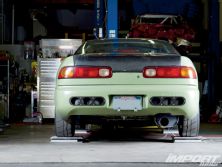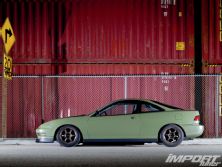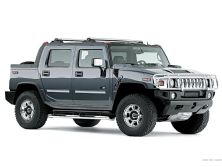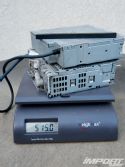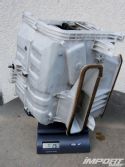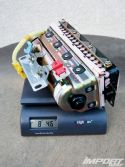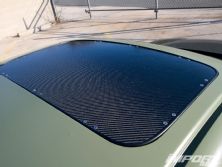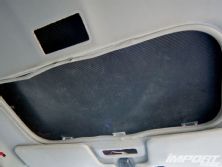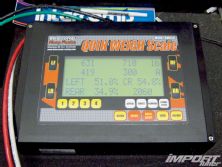By now, most of you should be familiar with our Project Integra, from seeing it as the test subject of "Fact or Fiction" installments or the random tech article (like "Ditch the Daily Grind", Feb '10 2NR). What our newer readers won't remember is that it started out as the subject of our "Ultimate Efficiency" tech series, started over two years ago to demonstrate how modifying your car to increase style and performance can also bring the benefit of increased fuel efficiency, allowing your mods to pay for themselves over time. Here's what you may have missed:
 |
Formula D, Summit Point, WV, 2006
|
Formula D, Summit Point, WV, 2006
Our DC's second life started when yours truly rescued it from a salvage yard in 2005, in Pennsylvania. It was bone stock, automatic, red, and rusting. The following two years it was kept in factory form and driven nearly 60K miles up and down the eastern seaboard to photo shoots, averaging between 220 and 240 miles between fill-ups. At one point during a long stretch of highway driving, I ran it from full to empty (with a few gallons of reserve in the trunk) just to see what its true mileage was-281, or about 21.3 mpg, based on its 13.2-gallon capacity. Metaphorically speaking, it was a hog.
It was mildly embarrassing, too. Sure, it was reliable, utilitarian-I could literally throw all my gear in it, or stand on its roof to get a shot without a second thought-but as an automotive enthusiast working in the scene, "Is that your car?!" was a question I heard all too often from feature car owners, who fought their hardest to hold back disgust. Things had to change. And after enough time spent shooting time-attack and drag-prepped track machines, along with scanning the technical specs of mainstream automotive's newer, increasingly more fuel efficient models, certain patterns began to emerge.
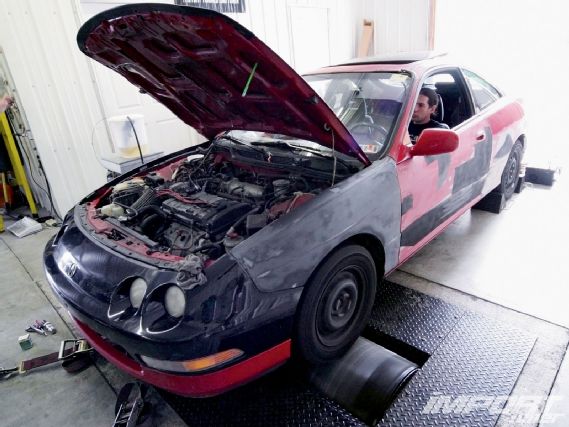 |
"Ultimate Efficiency", Part 1
|
"Ultimate Efficiency", Part 1
The basic principles of maximizing vehicle efficiency were explored in the first installment (Nov. '07), along with an introduction to testing procedures. By the second (Dec. '07), our Integra had been rid of its faulty power steering, air conditioning and ABS systems to cut static mass, and given an Unorthodox Racing lightweight crank pulley to reduce rotational mass. Its engine had been upgraded with a custom intake and exhaust to decrease backpressure and increase aspiration, and Hybridynamics of Latrobe, PA, Crome-tuned air/fuel ratios and ignition timing to within safe limits, increasing power by maximizing combustion efficiency. All combined, the modifications gained us 24 whp and 23 lb-ft of torque over stock, and a mixed-driving average fuel efficiency of 31.7 mpg-an increase of nearly seven mpg over the revised EPA estimates, and more than 10 over our starting averages.
I painted it green to celebrate.
To best understand the fuel efficiency/performance parallel, think of it as a simple algebra problem. More energy would be needed to accelerate a 4,000-pound car from 0-60 in X seconds than one weighing 2,000 pounds. We know that if the 2,000-pound car and the 4,000-pound car both make the same power, the lighter one will be faster. But if we drive it to keep pace with the heavier one, the lighter one will also become more fuel efficient. The US EPA states that for every 10 percent of static mass eliminated from a vehicle, fuel economy improves by seven percent. Hotrodders will tell you that cutting 100 pounds from the average car will increase its quarter-mile times by one tenth of a second. Drop weight and drive your car with a light foot, and watch stop-and-go fuel efficiency increase. Drive it with a heavy foot, and outrun the next guy.
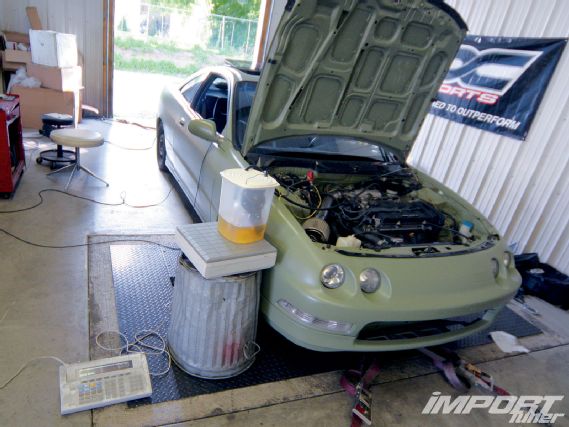 |
"Ultimate Efficiency", Part 2
|
"Ultimate Efficiency", Part 2
The same goes for aerodynamics; if we have two vehicles producing the same amount of power, one shaped like a bread truck and the other like a rocket, we know which one will reach a higher top speed. The more aerodynamic vehicle requires less energy to overcome wind resistance, and will also become the more fuel efficient of the two, driven at the same speed as its boxy brethren. Experts estimate that a two-percent improvement in a vehicle's aerodynamics (as gauged by drag coefficient) can improve its fuel economy by approximately 0.2 mpg, in mixed driving. Expect that figure to more than double at freeway speeds, where as much as 60 percent of the energy a car puts to the ground is lost to wind resistance. Improving a vehicle's aerodynamics means more of its engine's power can be put toward increasing acceleration at speed, attaining higher top speeds, or decreasing fuel consumption at highway speeds.
Decreasing static and rotational mass, and decreasing drag (improving aerodynamics) increases downforce and braking performance, improves handling, elevates top speeds, decreases acceleration times, and increases power and torque output. And as long as we fight the temptation to accelerate quicker and drive faster, fuel efficiency is also increased.
In the next installment, we'll be applying the logic of increasing performance and efficiency to the engine and drivetrain, in the quest for big power with reduced fuel consumption. We'll also discuss gearing, driving techniques, and improve upon modifications made thus far to increase the all-around efficiency of our Integra, as well as add some race-day mods to turn it into the dualistic commuter/track machine only the imports seem to pull off in style.
The Integra's low height and slanted windshield are part of what makes it aerodynamic. Another is its gradual sloping roof and hatch, that lead to a lateral(ish) trunk.
• The term "drag coefficient" is the classic standard of measurement used to identify a vehicle's wind resistance. In short, vehicles that are tall and boxy are the least aerodynamic, and are rated with higher numerical values (like the Hummer H2, at 0.57), while shorter, narrower, longer vehicles with smooth transitions and less frontal area are more aerodynamic (like the Nuna 3, at 0.07). The Integra's 0.33 drag coefficient beats out the Lamborghini Countach (0.42), R32 Skyline GT-R (0.40), Ferrari F430 (0.34), and even a car called the SSC Ultimate Aero (0.35). Still, it has room for improvement. An FD RX-7 slides in at 0.29, a Honda Insight at 0.25, and even the Toyota Sienna minivan beats it, at 0.30.
• One of a car's more significant areas of drag is the area between it and the driving surface. Lowering a car decreases the amount of air traveling underneath it that can cause drag with points like the wheels, control arms, exhaust, etc. According to Mercedes-Benz, "Lowering the ride height at speed results in a three-percent decrease in drag." Our Integra's aggressive BC Racing coilovers keep the car from bouncing over uneven surfaces, that would otherwise allow an influx of air under the car. Their decreased travel also limits changes in toe and camber over uneven surfaces, reducing rolling resistance slightly.
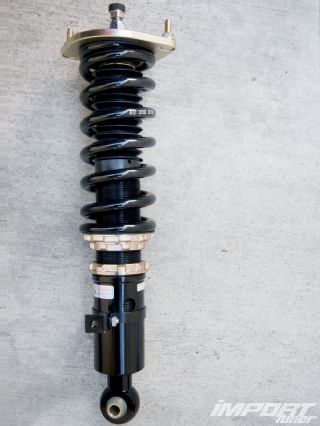 |
Increasing Performance, Efficiency and Style - Ultimate Efficiency
|
Increasing Performance, Efficiency and Style - Ultimate Efficiency
• With the tires below, 0ur ultra-light, forged aluminum SSR Type-C wheels helped save 9.4 lbs per corner-that's 18.8 pounds less unsprung, rotational drivetrain mass. According to EPA estimates, a 14-percent savings in fuel efficiency can be seen per ten percent of rotational mass removed from a vehicle's driveline. Adding lightweight wheels is the easiest and most attractive way to increase acceleration, cut braking distances, and improve suspension performance. In dyno testing, we found our SSRs (one of the lightest wheels on the market) to free up to 10 horses, and about as many lb-ft of torque.
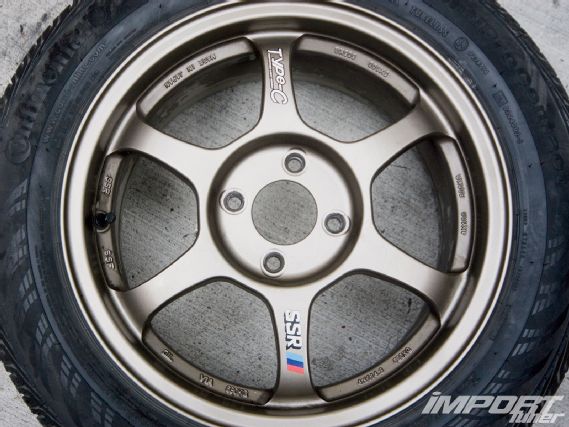 |
Increasing Performance, Efficiency and Style - Ultimate Efficiency
|
Increasing Performance, Efficiency and Style - Ultimate Efficiency
• Tires are also significant contributors to rotational mass, as well as drag, and frictional energy loss known as "rolling resistance", which can rob more than 20 percent of an engine's output to the wheels-meaning that if your 400whp EVO's tires were 100-percent efficient, it would actually be pushing closer to 500 whp. When modifying for increased fuel efficiency, look for a radial tire that's lightweight, features a thin sidewall that absorbs less energy when flexing, is of a smaller width to decrease contact with the ground, and is made of a stiffer tread compound for higher rebound. The 185/60-15 Continental ContiProContacts we added also bring a slightly larger circumference than stock, which further reduces rolling resistance. Tires are one of the only areas of increasing efficiency that doesn't simultaneously increase performance; tires like these will increase acceleration and top speed, but will offer significant drawbacks to traction over a sticky performance tire. The good news is that our Conti radials offer all the qualities we looked for in a fuel efficient tire, for about one third the price of some so-called "high-efficiency" tires, leaving us with money in the bank for some dedicated track meat.
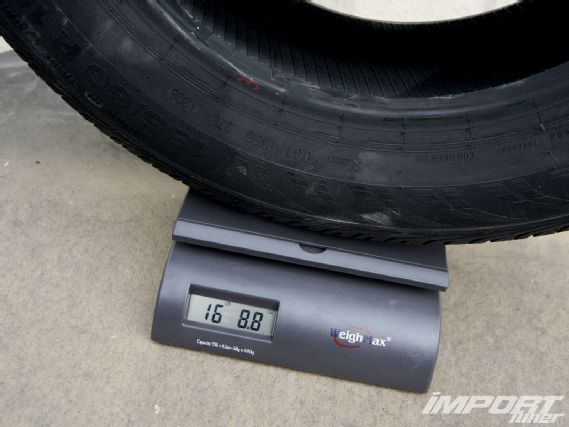 |
Increasing Performance, Efficiency and Style - Ultimate Efficiency
|
Increasing Performance, Efficiency and Style - Ultimate Efficiency
• Increasing the angle of a car's hood by propping it at the rear isn't always beneficial in and of itself, but decreasing the angle at which it meets the windshield, while covering the windshield wipers, helps cut drag.
• A car's doors are its heaviest detachable body components, mostly because of side-impact door beams, glass, power window motors, lock solenoids, and speakers. Removing some of these items in "race-day" doors (not pictured) cut more than 50 pounds over our stockers, but switching to carbon fiber replacements would be best.
• A tall wing, like the Type R unit or an aftermarket GT-style wing, will increase downforce, but create a large point of drag. We simply removed our small stock wing. Extending the lateral surface area of the trunk with a level, flush-mount wing would make it even more aerodynamic, as is the case with the current FWD land-speed record holder, Hondata's 246mph RSX (July, '09 2NR).
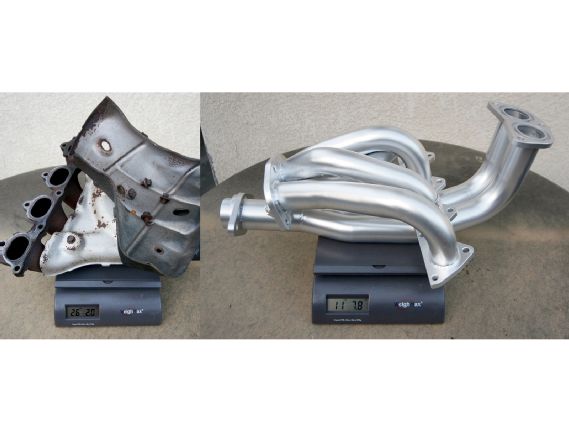 |
Increasing Performance, Efficiency and Style - Ultimate Efficiency
|
Increasing Performance, Efficiency and Style - Ultimate Efficiency
• Getting really picky, side moldings are also another point of drag, albeit small ones. Removing them is aerodynamically sound and looks better. Why else would Honda choose not to include them with the Type R?
• Low-profile sideskirts, like the ones we obtained from Versus Motorsports, further limit the amount of airflow that can enter the underside of a vehicle, decreasing drag and increasing downforce.
• One modification we left out when installing bolt-ons in the second part of "Ultimate Efficiency" was the addition of an aftermarket header. Here's why: they generally weigh a lot less than stock, cast steel units. Our two-piece DC Sports 4-2-1 unit shed nearly 15 pounds, and increases mid-range power to bump up fuel efficiency for the daily commute.
 |
Increasing Performance, Efficiency and Style - Ultimate Efficiency
|
Increasing Performance, Efficiency and Style - Ultimate Efficiency
• After the wheels, decreasing rotational mass lies predominantly in switching to a lighter clutch/flywheel setup. Our ACT Prolite flywheel, Xtreme pressure plate and street/strip disk dropped more than eight pounds over the OE equipment, while offering faster throttle response for rev-matching, increased power and torque output, and massively increased holding power.
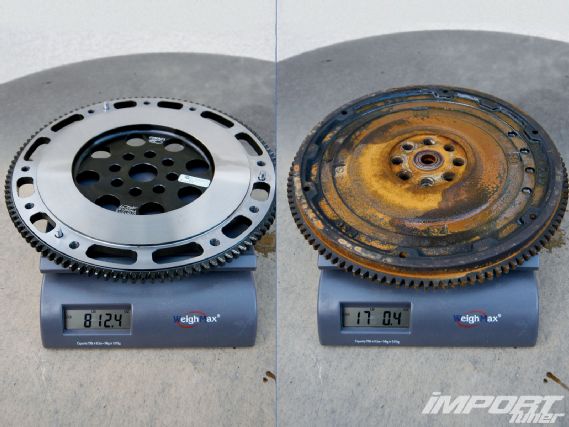 |
For even further benefit, unsprung clutch disks weigh slightly less than sprung alternatives-a great choice for a dedicated road-race setup.
|
For even further benefit, unsprung clutch disks weigh slightly less than sprung alternatives-a great choice for a dedicated road-race setup.
• Another huge improvement to be made in decreasing vehicle weight is in replacing heavy steel hoods with lightweight alternatives, like our Seibon carbon-fiber unit that saved more than 40 pounds, fit perfectly and brought a flawless finish.
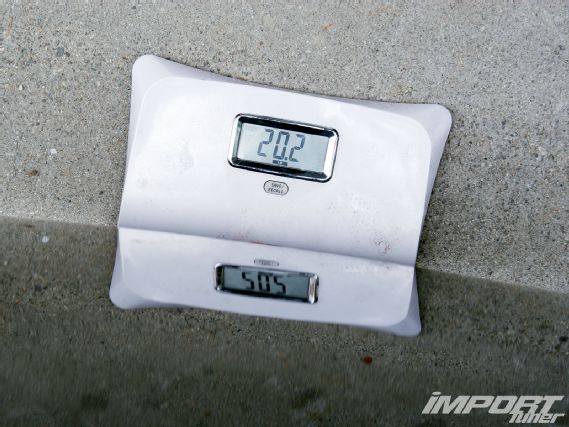 |
Increasing Performance, Efficiency and Style - Ultimate Efficiency
|
Increasing Performance, Efficiency and Style - Ultimate Efficiency
• One area that could use work is the recessed headlights found in the USDM '94-'97 cars, that might as well be thought of as tiny parachutes. Honda realized this, and designed the '98-'01 cars' headlights to mount flush with the bumper.
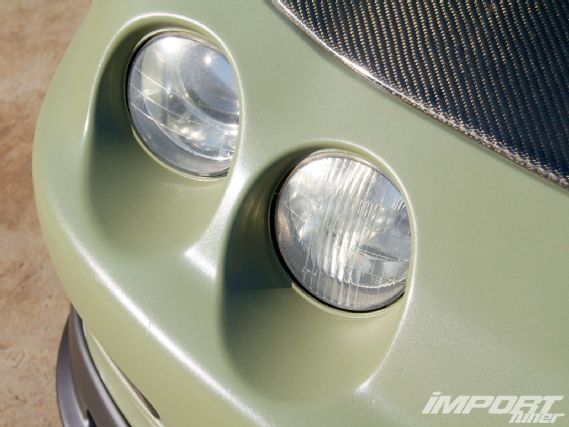 |
Increasing Performance, Efficiency and Style - Ultimate Efficiency
|
Increasing Performance, Efficiency and Style - Ultimate Efficiency
• Other significant offenders of drag are a car's side mirrors. Our APR carbon fiber replacements' small, rounded bodies and minimal uprights were designed with reducing drag in mind. Thanks to some brainless NHTSA mandate, OEs in the U.S. aren't permitted to equip cars with convex mirrors from the factory; if they could, mirrors like our APRs might come standard.
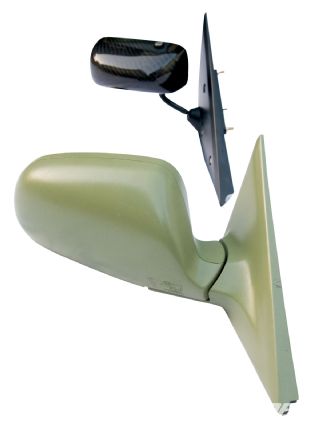 |
Increasing Performance, Efficiency and Style - Ultimate Efficiency
|
Increasing Performance, Efficiency and Style - Ultimate Efficiency
• Decreasing a vehicle's frontal area cuts down on drag, but as mentioned before, so does decreasing airflow underneath it. Adding a front lip spoiler increases area slightly, but brings more benefit than drawback if it can limit airflow to a vehicle's tires and underbody, and would also increase downforce in doing so. Our Versus Motorsports special did all that, and also kept weight down with its fiberglass construction.
Decreasing drag even more is the addition of a flat "bellypan" spanning the entire underside of a vehicle, covering the points of drag mentioned earlier. Not only are they impossible to find for most applications, we're not about to fit our car with a modification that would last two hours on rough LA streets. Even though we'll probably forget about our front lip and smash it to bits by the time you read this.
• Other weight reducers are carbon fiber hatches and trunks, like this our Seibon unit, which offered a weight savings of nearly 25 pounds over stock. Lighter yet would be to replace the USDM heated glass with JDM glass from the ITR, but for the ultimate in weight savings, replace the glass with a polycarbonate alternative from Flex-a-lite, which weighs only a few pounds, is scratch-resistant enough to survive years of use, and offers the advantage of being able to be sanded/buffed back to a brand-new finish.
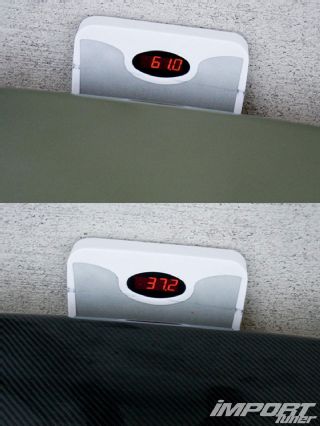 |
Increasing Performance, Efficiency and Style - Ultimate Efficiency
|
Increasing Performance, Efficiency and Style - Ultimate Efficiency
While replacing our hatch and glass, we elected to remove the rear windshield wiper and motor-another source of drag and dead-weight. If you're not washing your car frequently to not need it, you're a bad car owner. Following suit was our decision to replace the rear antenna and motor with a windshield-mounted alternative.
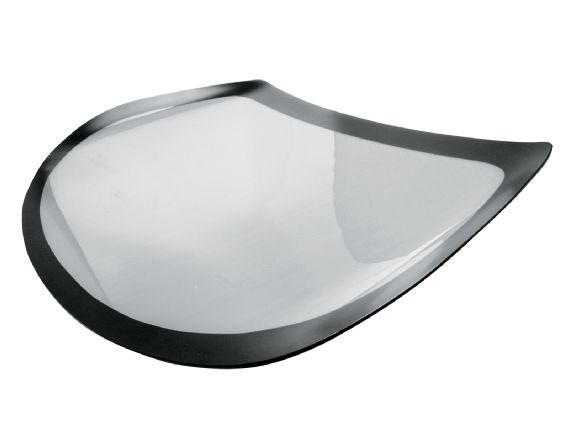 |
Increasing Performance, Efficiency and Style - Ultimate Efficiency
|
Increasing Performance, Efficiency and Style - Ultimate Efficiency
• As mentioned before, a one-piece bellypan spanning the entire underneath of a vehicle is one of the best ways to improve aerodynamics, and if it ends in a valence at the rear, will streamline airflow and decrease the huge drag point that is the rear bumper. Like with the headlights, Honda revised this area of the Integra in '98, adding a slight cut-out to help pent-up air escape easier. Short of a belypan and valnce, diffusers like these lighterFaster carbon fiber units are one of the best ways to alleviate drag. They're also lighter and more attractive than billet plates of years past.
• Aside from heat and airbags that our Integra never came with, OE seats can't compare to quality aftermarket seats that deliver better comfort, security, support, and usually weigh significantly less than stock. Replacing our Integra's with these Buddyclub P-1s cut weight by roughly 36 pounds. And aside from the occasional romantic excursion, we really didn't miss having a seat that reclines, once our buckets were set up properly on sliders.
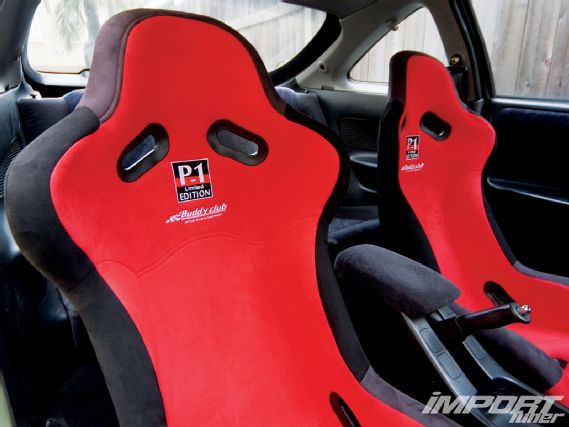 |
Increasing Performance, Efficiency and Style - Ultimate Efficiency
|
Increasing Performance, Efficiency and Style - Ultimate Efficiency
• From stereo headunits and duct venting, to the cabin air filter housing, heater core and passenger-side airbag, there's a lot of weight to be lost from the dash, if you're crazy enough to do it. But for street driving, you might opt for switching to a lighter headunit and calling it a day.
• If you're really crazy/motivated, you can do what we did and gut the entire interior, remove all the sound-deadening material from the floor, trunk, doors, firewall and roof, and then re-assemble. This was what our interior looked like before we put everything back together for the final weight. Over 40 pounds of sound deadening material was removed, and total interior weight savings ran close to 100 pounds, not including the seats. Even more could be lost, breaking out the drill and angle grinder.
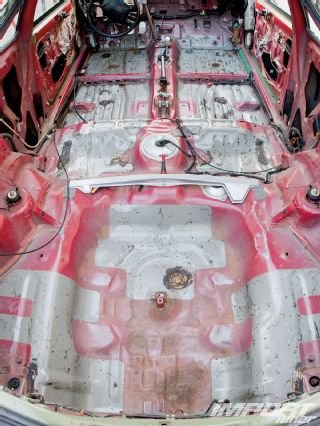 |
Increasing Performance, Efficiency and Style - Ultimate Efficiency
|
Increasing Performance, Efficiency and Style - Ultimate Efficiency
• Honestly, what does a sunroof do besides allow magnified heat to beat down upon your dome? We fabbed up a dry carbon "plug" to replace ours, and lost 35 pounds of top-heavy weight in the process.
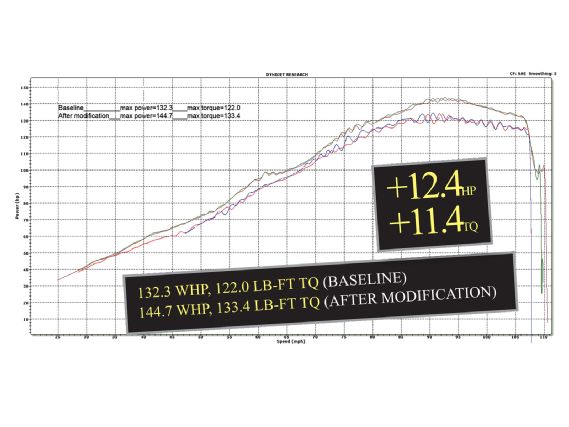 |
Increasing Performance, Efficiency and Style - Ultimate Efficiency
|
Increasing Performance, Efficiency and Style - Ultimate Efficiency
Weight
2,685 lbs (factory rated curb weight)
2,060 lbs (after modification)
-625 lbs
1/4 mile acceleration
15.92 seconds (before)
14.86 seconds (after)
-1.06 seconds
0-60 acceleration
8.1 seconds (before)
6.3 seconds (after)
-1.8 seconds
Fuel consumption
31.7 mpg (before)
37.9 mpg (after)
+6.2 mpg
+81.84 miles/tank


